Last July, Dallas-based artist Antonio Lechuga was shot multiple times while jogging in Old East Dallas. Though the recovery process has been long and arduous, Lechuga is grateful to be where he is now, and has seen this experience as a way to reevaluate his life and art.
At the time of the shooting, Lechuga had just mounted a solo show at Love Texas Art in Fort Worth. The exhibition, Fences, showcased large diamond-shaped foam structures covered in cobijas, thick fleece blankets known for their designs, which feature animals, religious icons, and floral patterns. With Fences on view that summer, Lechuga was working toward a larger installation of works from this same series at Dallas’ Oak Cliff Cultural Center. That show, which was set to open in August 2022, was postponed and will open later this year.
Lechuga told me that though he had been living and working in his studio since 2018, he has been living with his parents during his recovery. Regarding the last few months, the artist says, “It’s going extremely well. Every day, every week is getting better and better. It’s slow, but it’s going faster than it should… I feel good. I have to take breaks, but that second wind will come around.”
In October 2022, Lechuga visited his studio for the first time since the accident, and in many ways returned to a time capsule of his life. During the previous months he had been singularly focused on his recovery, and reentering the space reminded him that he never expected to be away from his studio and residence for so long. Recently, over the past month, Lechuga has been preparing the space to resume his practice, which includes fixing a leaky sink and making room for new work. He and a friend also assembled shelving units to hold some of the past fence works.
Earlier this month, Fort Worth-based photographer Raul Rodriguez and I visited Lechuga in his studio in East Dallas, just north of Fair Park. Next door to the former Oliver Francis Gallery in a part of town that houses small warehouses and car shops, Lechuga’s studio is unassuming from the outside. Walking in, you are immediately greeted by large-scale fence pieces, an expansion of Lechuga’s Love Texas Art show, which line the left side of the space. The artist’s materials, including towering piles of cut foam and a mountain of unopened cobijas in clear plastic bags, fill sections of the studio. Behind a short wall is the artist’s living space and additional storage.
Though reminiscent of chain-link fences often used in residential areas, Lechuga’s installations are a direct reference to the U.S./Mexico border. Lechuga is a second-generation Mexican American with close family on the other side, so this wall created to separate the two countries is ever-present in the artist’s life. Speaking about it, Lechuga notes, “It’s like a magnet, it pulls you.”
Working in various degrees of abstraction and in both painting and sculpture, Lechuga has spent years making art about the border and exploring the ways borders exist across the world. His earlier, more abstract paintings feature colorful angular designs that in effect deconstruct the fence motif and often present it in bright, playful hues. These same structures emerge in small-scale relief sculptures in which the technicolor palette is replaced by shades of blue denim. Over the last few years, both in his paintings and sculptures, the diamond-shape fence motif has become more clear and direct.
As he considers borders, walls, and fences, Lechuga looks for examples of how these structures can bring people together. He tells me, “There’s lots of examples of fences, and fences working… I think a large part of what a wall is, what a fence is, is to divide people or to divide things — environment, cultures, history, and people — it does a lot of things that we don’t want it to do. And it doesn’t have to. It doesn’t have to divide, it doesn’t have to push people away. It doesn’t have to say ‘this is mine and that is yours.’”
Lechuga points to examples like the Wailing Wall in Jerusalem, which draws people of different religions to it as a sacred space, and The Great Green Wall, a replanting initiative across a handful of countries in Africa to stave off the spread of the Saharan Desert. He also cites examples of how borders and walls are failing, like the unfinished portions of the U.S./Mexico wall, which abruptly stops and leaves wide swaths of land unguarded.
He is additionally looking at ways other artists have responded to borders. Lechuga showed me images of murals painted on the Mexico side of the border wall, which work to beautify the space. We discussed the bright pink see-saws that were installed along a portion of the wall that separates El Paso and Ciudad Juarez. This intervention, created by Ronald Rael, a professor of architecture at the University of California, Berkeley and Virginia San Fratello, an associate professor of design at San José State University, transformed an object meant to divide into a meeting place. With all of these ideas in mind, Lechuga covers his sculptural fences in cobijas, which he sees as a symbol of warmth and comfort.
During our visit, Lechuga shared some examples of his earlier works that use an abstracted rendition of the fence motif; these smaller relief sculptures, however, are assembled on a flat surface and don’t employ the repetition of the diamond shape found in metal fences. Instead, angular shapes are joined together like a puzzle and create depth by stacking on top of each other. These pieces, covered in various shades of denim instead of cobjias, struck me as an important foil for his current works — whereas cobijas recall a maternal care and comfort, blue jeans bring to mind rancheros, vaqueros, and other laborers.
Denim is worn for its durability; a tough fabric designed for the harsh environment of the American West. Though today it has transcended its original utilitarian function, it remains a symbol of tenacity and the working class. Lechuga’s use of the material references workers who cross the border to earn a living as they work toward a better life. He wraps the fence motif in this fabric as if to say ‘you may be tough, but we are tougher.’ These pieces emanate a ruggedness not present in the Fences works. Instead, the cobija-covered sculptures are jarring through their juxtaposition of the ideas of division and barriers with love and comfort.
As he is recovering, care and comfort are things Lechuga is embracing more than he had before. He tells me, “I was thinking about what it means to rest and how we don’t do it enough. Only when forced, do we take the time for that type of self care. Usually out of exhaustion but never a conscious enough decision.” He mentioned that while he was in the hospital, not only did he find it difficult to rest, but he watched as his family would toss and turn in the reclining chair provided for visitors in his room. As a result of his thinking about what rest looks like, Lechuga plans to create some furniture pieces in the future.
Lechuga explains, “It really irked me to think that we do not focus enough on how important it is to rest, and the objects and tools we surround ourselves with to achieve that do not accurately reflect that care. Such a simple act that’s a huge part of our lives, but that’s not given enough attention or care.”
The pieces he has in mind will be a part of his artistic practice, but will also be functional. Lechuga says he wants to move away from the idea of chairs as solely utilitarian objects that are essentially a small piece of the larger presentation of a room, and instead center chairs as “a type of pleasure center while using unconventional materials.”
Just as his current body of work investigates the idea of what softness can do to an imposing structure like a border wall, these furniture pieces will embrace the idea of comfort, care, and rest. While Lechuga jokes that he isn’t “calling for a rest revolution,” the idea of self-care has shaped the way he lives his life today.
He shares, “I’ve taken a lot of forced time off from my studio life, so I’ve filled it the things I enjoy doing but didn’t always give myself the time for before: being with friends, seeing movies I always saved but never watched, and trying to read more actively… as a whole, I’m trying my best to be more conscious about my mental health, what I need and what is good for me… Rest is important. We have to take rest.”
Update: This article has been updated to reflect the neighborhood in which Antonio Lechuga was shot. The incident occurred in Old East Dallas, rather than Oak Cliff.


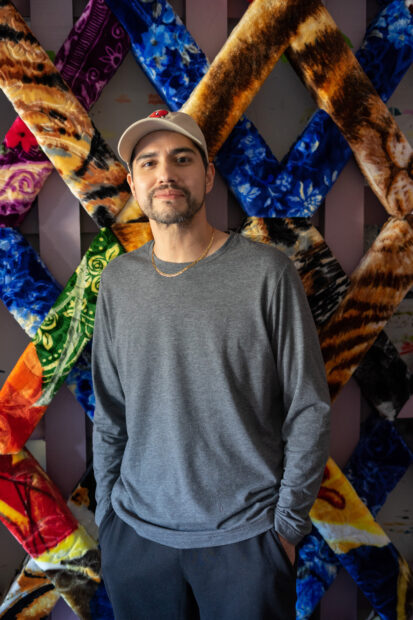
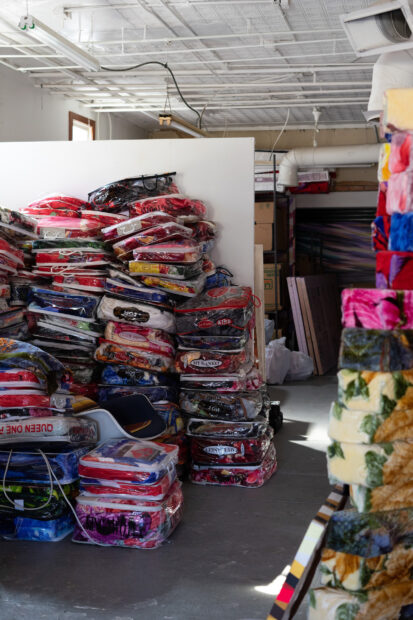
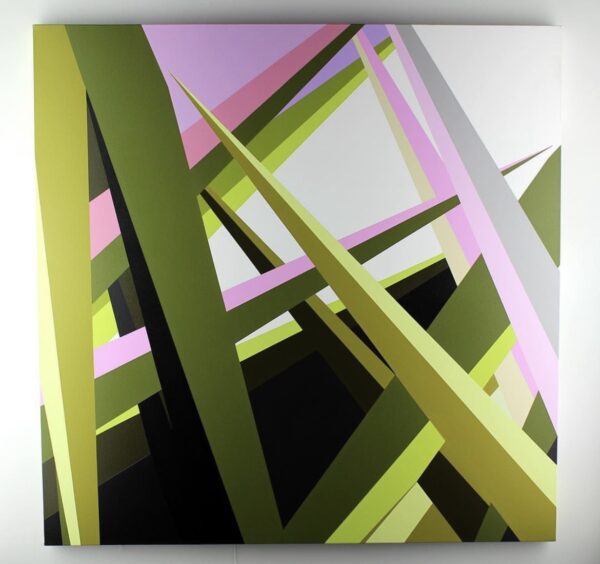


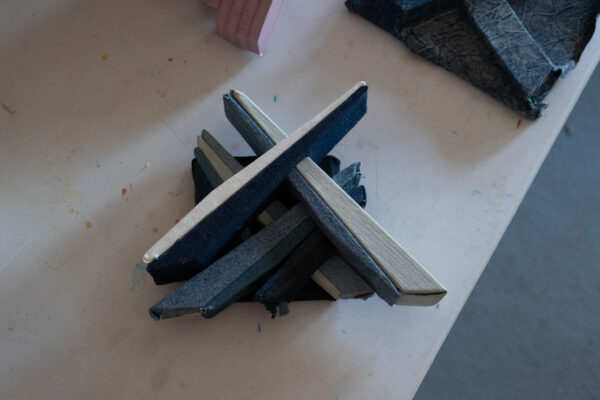
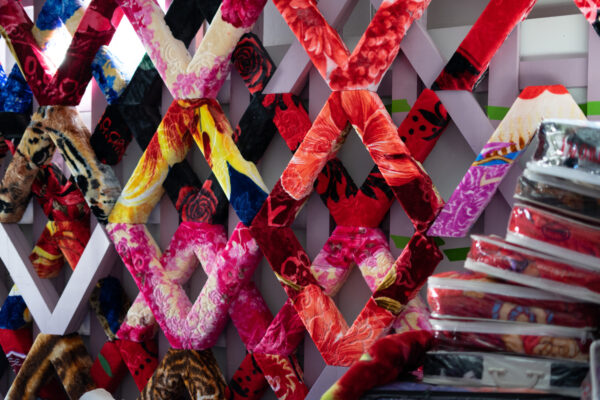

1 comment
Great news! Thanks for this update. What a beautiful, gifted fella. Bless Tony and his continued recovery.